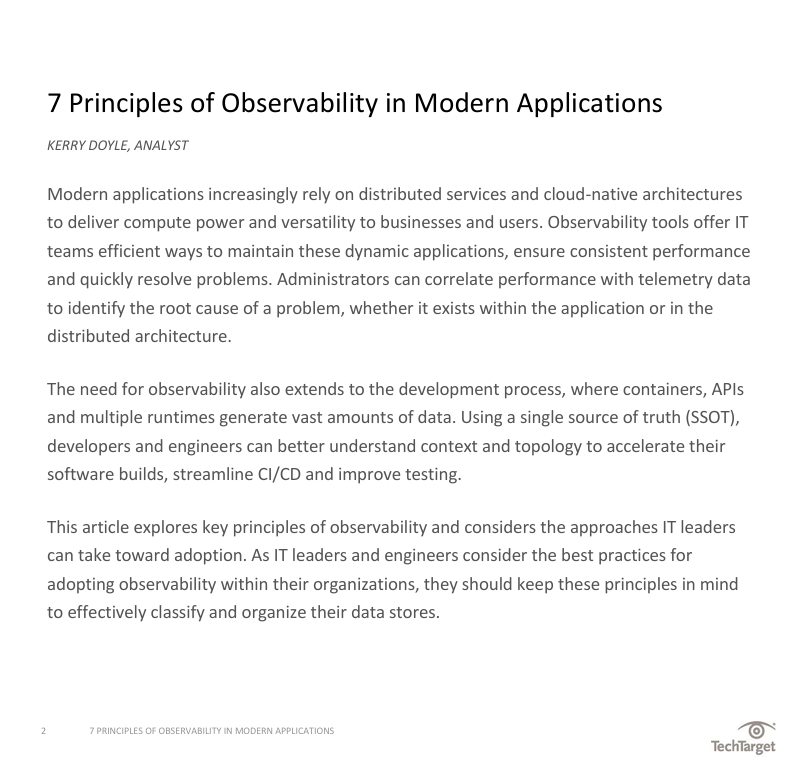
7 Principles of Observability in Modern Applications
Modern applications increasingly rely on distributed services and cloud-native architectures to deliver compute power and versatility to businesses and users. Observability tools offer IT teams efficient ways to maintain these dynamic applications, ensure consistent performance and quickly resolve problems. Administrators can correlate performance with telemetry data to identify the root cause of a problem, whether it exists within the application or in the distributed architecture.
The need for observability also extends to the development process, where containers, APIs and multiple runtimes generate vast amounts of data. Using a single source of truth (SSOT), developers and engineers can better understand context and topology to accelerate their software builds, streamline CI/CD and improve testing.
This article explores key principles of observability and considers the approaches IT leaders can take toward adoption. As IT leaders and engineers consider the best practices for adopting observability within their organizations, they should keep these principles in mind to effectively classify and organize their data stores.

Complete this form to
download the whitepaper
@TechTarget